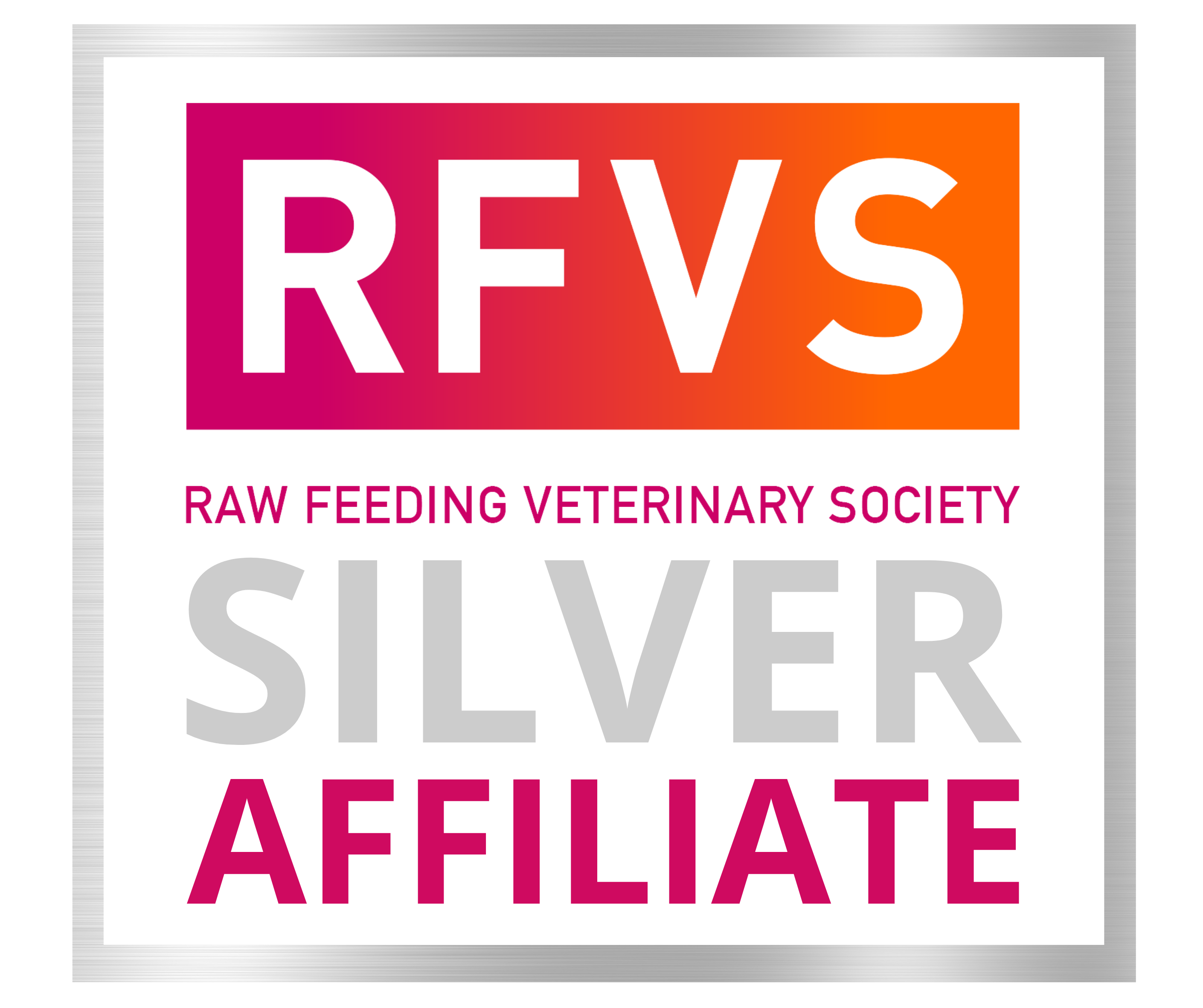Nutritional Requirements of Cats
CATS & CARBOHYDRATES DO NOT MIX
Cats are obligate carnivores, meaning they have nutritional requirements that can only be met with a diet based on animal tissue. The macronutrient profile for cats is high in protein and fat, consistent with a meat and bone based diet.
“The carbohydrate ceiling explains many of the intake patterns seen in both dry and wet diet experiments and suggests that cats may only be able to process ingested carbohydrate up to a certain level.” 1DEFINING PROTEIN LEVELS
Your vet may refer to a raw meaty bone diet for cats as ‘high protein.’ This is a misnomer: a prey-based diet provides a normal level of protein for cats. It is the modern, processed diets (including the grain-free ones) that contain abnormal (i.e. low) levels of protein. Understanding the protein requirements of a cat becomes even more important as they age.
WHAT DOES THE SCIENCE SAY?
This article by Dr Mark Peterson published on FelineNutrition.org describes in detail the importance of the amount and quality of protein in the diet of a cat, and even more so in the aging cat. Professor David Raubenheimer has also carried out a lot of work on the protein requirements of carnivores, including domesticated cats and dogs.
Here is a summary of their findings in cats (follow the links above for more detail):
- As cats age, they absorb and metabolise protein less efficiently – therefore it is vital that they are offered plenty of high quality protein.
- Cats have no requirement for carbohydrates (grains, vegetables, fruits etc). They are physiologically and metabolically adapted to have high protein requirements.
- Cats have an innate drive to eat enough protein. If they are on a low protein/high carbohydrate diet (processed cat food, including ‘grain-free’ ones), they will attempt to meet their protein needs by over-eating carbohydrates. This results in cats that are either overfed and overweight, or normal weight but always hungry.
As it is digested, protein is broken down into amino acids. A cat’s liver produces a high level of enzymes whose job it is to catabolise (break down) the amino acids. This high rate of protein catabolism makes sense for a cat eating its natural diet of whole prey. But if you shift a cat onto a low protein diet (processed cat biscuits and tinned food are low in protein, and are poor quality proteins) their liver will not adapt, rather it will continue to produce high levels of catabolic enzymes. In the absence of food-source proteins to catabolise, the proteins within the cat’s own muscle begin to be broken down – this is why old cats get skinny. Old cats need plenty of high quality protein to counter this.
PET FOOD INDUSTRY RESPONSE TO THE LATEST RESEARCH
Pet food manufacturers are starting to introduce grain-free formulas that are higher in protein content (although seldom high enough). You may see improvements in pet health on one of the higher quality grain-free diet, especially with yeast issues, but a proper species-appropriate diet offers the best chance of resolving issues.
Unfortunately, the type of protein used in most affordable pet foods is of poor quality. Whole food protein sources (animal meats) aren’t cheap. Most commercial protein is derived from crude, rendered or non-meat sources. The digestibility and absorbability is questionable at best. This means your pet’s body won’t get optimal nutritional benefit from the protein in most commercial pet foods. As more protein is added by the pet food industry, the quality will decrease proportionately to insure the products remain affordable for consumers, and profitable for pet food companies.
While science is proving cats need more protein and manufacturers are beginning to deliver high protein products, they are still not biologically correct. High protein diets that are dehydrated or extruded (made into kibble) do not contain adequate moisture content. Cats were designed to get most of the moisture their bodies need from the water found in fresh prey (which is about 70 percent water). When cats eat dry food, their organ systems become stressed and they can end up with kidney, liver and digestive stress.
THE FELINE BODY IS DESIGNED FOR A VERY LOW CARBOHYDRATE DIET
- Cats have no taste receptors for sweet flavours
- They have low rates of glucose uptake in their intestine.
- They have no salivary amylase to break down starches, and a reduced capacity of pancreatic amylase and intestinal disaccharidases. In other words, cats don’t produce the enzymes required to digest carbohydrate diets.
- The carbohydrates that felines eat in the wild are pre-digested (found in the stomachs of prey animals).
Most of the illnesses we see in cats today are likely attributable to low quality, biologically inappropriate commercial pet food formulas.
